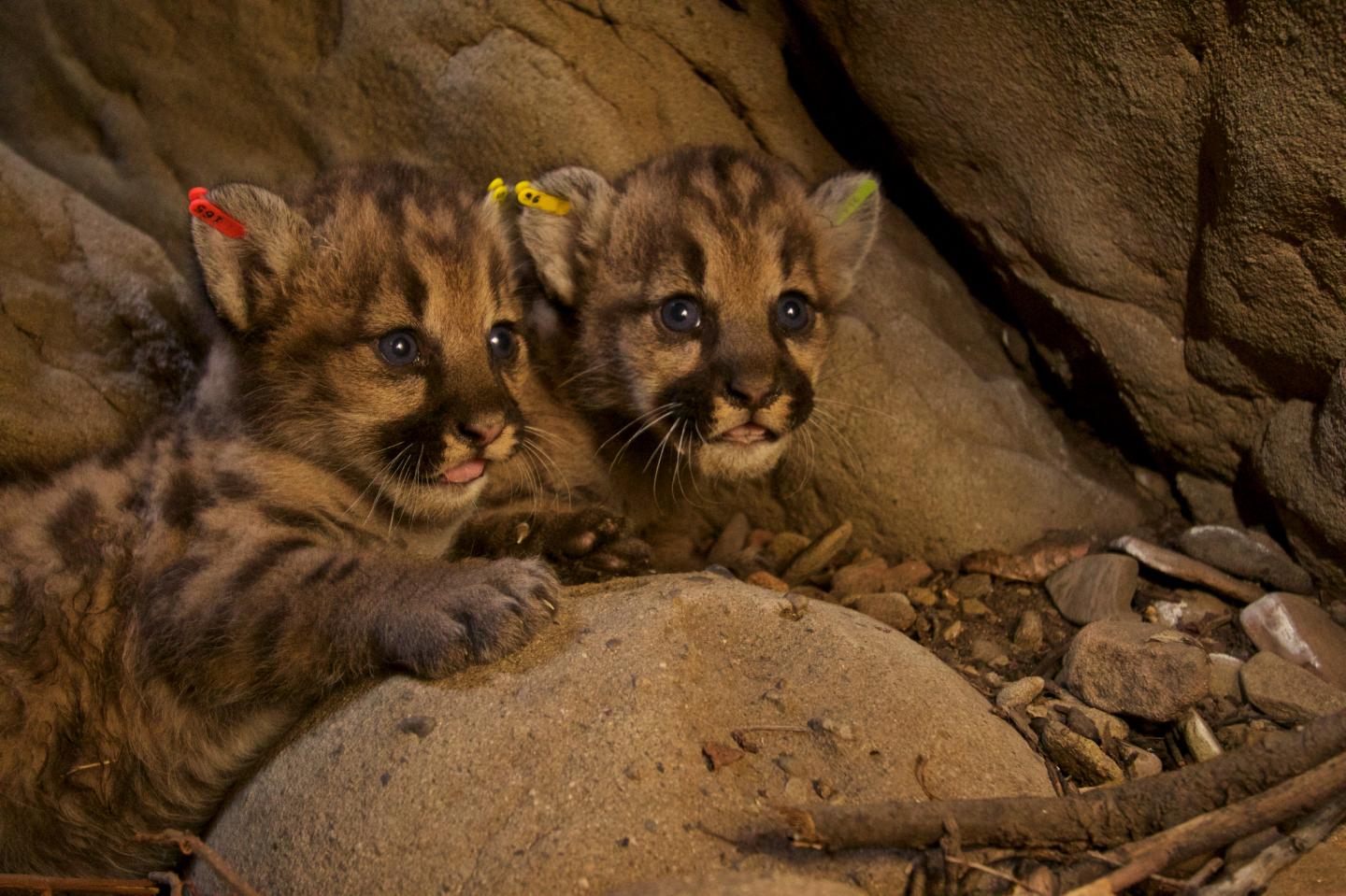Highways Are Driving Cougars to Inbreeding and Extinction In Southern California
Mountain lions that lurk in heavily populated regions of Southern California are on track to become locally extinct within 50 years, a new study warns.
Highways and other urban developments have fragmented the cats' habitats, making it difficult for them to find new mates. This isolation has led to inbreeding, which makes populations less resilient and viable over time, according to the research, which was led by John Benson, a vertebrate ecologist at the University of Nebraska.
Benson and his colleagues studied two mountain lion populations that are isolated in the Santa Ana and Santa Monica Mountains.
The Santa Monica lion population lives around north Los Angeles and is made up of about 15 cats, with eight known kittens and subadults. The Santa Ana population is further south and contains about 30 cats, 13 of which are kittens and juveniles.
The team used a technique called population viability analysis, which is a statistical method of predicting if extinctions of animal groups might occur within certain timeframes. The results, published Wednesday in the journalEcological Applications, show that the steady decline of genetic diversity in SoCal mountain lions will probably cause them to be wiped out by the 2070s, unless conservation programs are enacted.
The lions-which are also known as cougars, panthers, and pumas-have been boxed into small habitats by human infrastructure, especially roads. Because they have limited mating options, the cats may experience a phenomenon called inbreeding depression, which is a decrease in fitness and survival that can cause severe endangerment and extinction.
"It's easy to read our paper as yet another pessimistic story about wildlife threatened by human actions, and in a sense that is true," said Benson in a statement. "However, there is also a more optimistic message in that our model predicted that these populations can persist with relatively modest increases in landscape connectivity."
The Santa Ana population is bisected by Interstate 15. Since 2013, at least four cougars have been killed by cars during crossing attempts. Five male lions are known to have successfully made it across the highway, two of which have sired litters of kittens.
Those males may have helped inject some short-term diversity into the gene pool. But they have since fathered kittens with their daughters and granddaughters, demonstrating that it will take more than a few crossings to keep the lion population healthy over the long term.
One of the Santa Monica lions, called P22, is famous in LA because he crossed multiple highways in order to claim territory near the Hollywood Sign in Griffith Park. Unfortunately, there are no females for him to breed with there, and he remains a loner.
 P-52 (left), born in 2016, was killed in 2017 on the 118 Freeway. His sibling P-50 (right) was moved to the Santa Susana Mountains in 2017. Image: National Park Service
P-52 (left), born in 2016, was killed in 2017 on the 118 Freeway. His sibling P-50 (right) was moved to the Santa Susana Mountains in 2017. Image: National Park ServiceEfforts to build safe crossings for the lions, such as underpasses and bridges, are fortunately in the works. The nonprofit Save LA Cougars aims to build an overpass over Liberty Canyon to help the Santa Monica population, and a bridge near Temecula is being eyed as a potential route over I-15 for the Santa Ana lions.
Read More:Watch a Man Calmly Describe Choking a Mountain Lion to Death to Save His Life
"If we can maintain healthy populations of mountain lions-a species that roams widely and requires such large spaces-here in greater Los Angeles, that bodes well for our ability to conserve large carnivores anywhere," Benson said
Get six of our favorite Motherboard stories every dayby signing up for our newsletter.